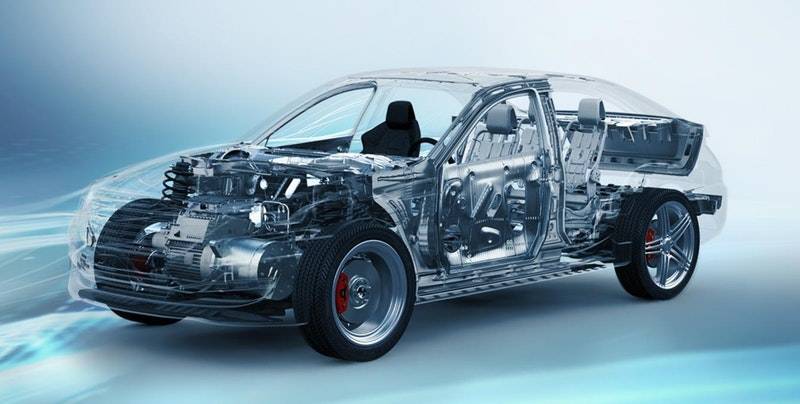[ihc-hide-content ihc_mb_type=”show” ihc_mb_who=”reg” ihc_mb_template=”3″ ]
[vc_row][vc_column][vc_column_text]Credits: www.3dprintingprogress.com
Automotive and aerospace manufacturers are increasingly turning to fiber lasers to resolve their manufacturing challenges. Fiber lasers are very stable and reliable instruments, which offer the best beam quality for material processing applications where precision is important. Compared to traditional manufacturing processes such as resistance spot welding or conventional laser welding (gas and solid-state), fiber lasers offer improved energy efficiency, smaller machine footprint, lower maintenance requirements, improved machine lifetime and faster cycle times for high-volume production. Consequently, process speed is maximized; material costs and operation costs are minimized.
The superior precision provided by fiber lasers is particularly useful for manufacturers switching to electric and lightweight vehicle designs. Significant weight reduction is achieved by minimizing the size of flanges via fiber laser welding, while the safe engineering of batteries is enabled by wobble-beam fiber welding. Key players developing fiber lasers for automotive manufacturing include Trumpf (Germany) and the fiber laser market leader IPG Photonics (USA). While laser processing is less common in the aerospace industry, activities such as the Innovate UK OLIVER project that explores game-changing technologies for aerospace aim to improve this with support from IPG Photonics. 94.6% of the $1.409 billion revenue IPG Photonics reported for 2017 originated from material processing. End-users of IPG Photonics fiber lasers include Volkswagen, BMW, Ford and Boeing.
Inside a fiber laser, rare-earth metal elements doped into an optical fiber function as the gain medium and determine the infra-red output wavelength. Fiber lasers can easily achieve average output power in the range of 1 W to >10 kW, or function as ultrafast pulsed energy sources. Many fiber-based machines utilize back reflection protection protocols for optimized processing of reflective metals.[/vc_column_text][vc_single_image image=”3502″ img_size=”full” add_caption=”yes”][vc_column_text]Technical advances and price reduction in fiber laser systems have also led to their utilization in 3D printers for metal deposition, which are primarily targeted at the aerospace industry. Products available range from metal printers using powder bed fusion processes to those employing wire-fed deposition. The latter enables dual functionality in additive manufacturing and laser brazing. Examples of cost-effective, fiber-based 3D printers include those offered by Xact Metal (USA), which spun out from Penn State University & established itself as a new player in the 3D printer market in 2017. Xact’s selective laser melting machines can print several metals including aluminium, titanium, stainless steel & superalloys. The key innovation is the patented gantry system with lightweight mirrors that move the laser beam in X-Y motion. The absence of complex optics present in conventional metal printers reduces system cost.[/vc_column_text][vc_single_image image=”3503″ img_size=”full” add_caption=”yes”][vc_column_text]An unbiased analysis of these technologies and markets is available in a report titled Fiber Lasers 2018-2028: Technologies, Opportunities, Markets & Forecasts, which was recently published by the British technology consulting company IDTechEx. The report provides an independent assessment of fiber laser innovations that will have a major impact on the automotive and aerospace industries within the next decade. It also contains company profiles and product overviews of 22 fiber laser suppliers, which includes all major fiber laser suppliers based in Europe, USA and Asia. IDTechEx forecast the global fiber laser market to reach a size of $8.9 billion in 2028.[/vc_column_text][vc_single_image image=”3504″ img_size=”full” add_caption=”yes”][/vc_column][/vc_row]
[/ihc-hide-content]


